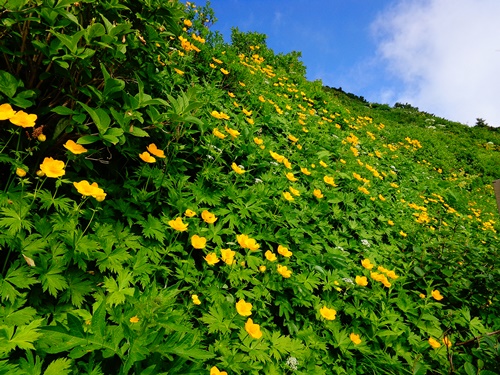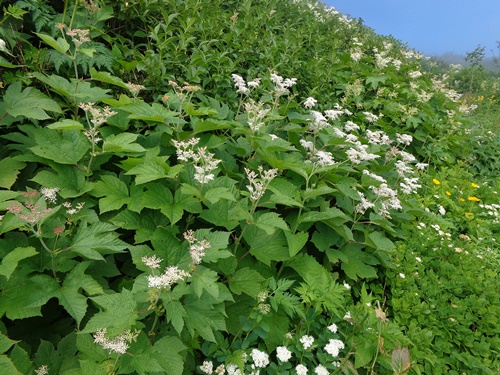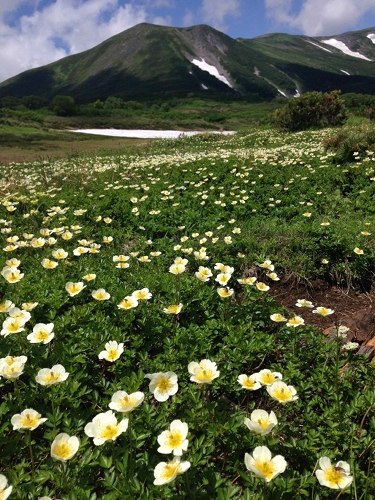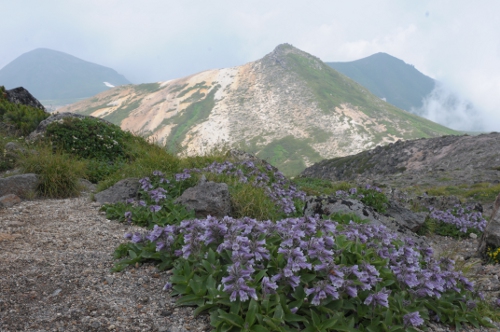From Mt. Kurodake’s 7th Station to the peak, the Trollius riederianus are spreading over a broader area and approaching their best viewing season.
The flowers are also blooming around the 7th Station, meaning the entire northeast face of the mountain is now covered with flowers.
Additionally, the Filipendula camtschatica, Aruncus dioicus var. kamtschaticus, Spiraea betulifolia var. betulifolia and other flowers are starting to form communities around the 9th Station. Their beauty makes it easy to forget the difficulty of the climb.
Photos: Trollius riederianus near the 8th Station (left) and Filipendula camtschatica near the 9th Station (right) Jul. 24
The flowers are also blooming around the 7th Station, meaning the entire northeast face of the mountain is now covered with flowers.
Additionally, the Filipendula camtschatica, Aruncus dioicus var. kamtschaticus, Spiraea betulifolia var. betulifolia and other flowers are starting to form communities around the 9th Station. Their beauty makes it easy to forget the difficulty of the climb.
Photos: Trollius riederianus near the 8th Station (left) and Filipendula camtschatica near the 9th Station (right) Jul. 24



